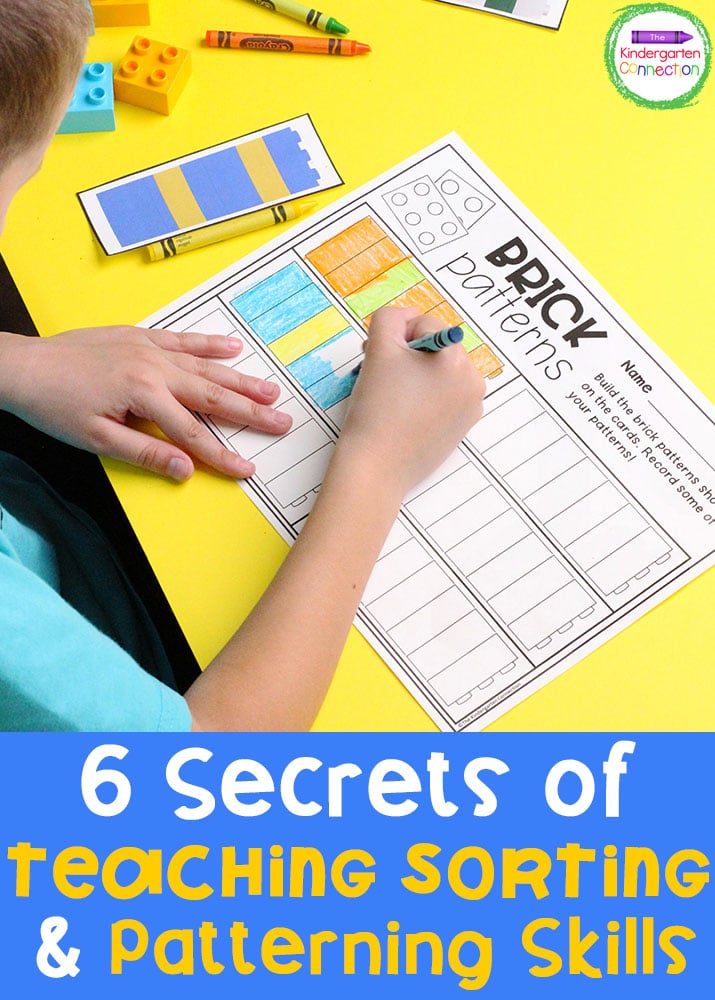Sorting and patterning are two skills typically taught very early. From sorting toys as children clean up from centers to practicing patterns during calendar time, children are exposed to sorting and patterning in many natural ways. But, some kids don’t pick up on those skills as easily as others. What if you could give your students a stronger background in these skills? Well, you’re in luck! Check out these tips and secrets for teaching sorting and patterning skills!
*For even more learning fun, grab our Pattern Centers and Activities for Pre-K & Kindergarten!

Teaching math is an enormous task, and with the new changes in adopted state standards, the bar for teachers has risen even higher. That’s because there is a lot that goes into teaching math. It’s comprehensive and systematic.
Mathematicians indicate there are five primary disciplines of math that should be taught, which are as follows:
Exclude one of those components and children may suffer in their math skills and experience unnecessary difficulty in learning math.
Developing sorting and patterning skills is just one of the steps to effective mathematics instruction. It falls under the algebra strand of math.
Following this will be more posts about the five disciplines of math and how teachers can be sure to include each within their math instruction.
Sorting and patterning skills involve understanding relationships among sets, how those sets are represented and analyzing of those sets.
A child who has good sorting and patterning skills can:
Simply put, sorting and patterning help children understand the nature of mathematics. Not only is sorting and classifying a natural act for children, but children also find it interesting.
Collecting, sorting, classifying, making patterns… these are all great things for children to do because they teach children about relationships and attributes, as well as teach children how rules apply to sets.
And, since math is all about rules and systems, lots of practice and exploration in these skills is a really great thing for those developing minds!
While sorting objects and making patterns does seem to come naturally for many children, it doesn’t for all. Let’s look at some issues for children who have lower sorting and patterning skills.
Those who struggle with these skills also tend to have difficulty in:
Like all other math skills, sorting and patterning skills are developed in a sequential manner. Children begin by comparing objects and matching like items. Then they learn to categorize, which is sorting. They typically start with sorting by color, then moving on to sort by type.
Next comes classifying. When learning to classify, children first learn how to classify by naming attributes that allow items to fit within a group, then move on to identifying attributes that exclude these items from a group.
By having a foundation in sorting, children can then move on to the recognizing and creating of patterns, another way to organize. By the end of kindergarten, children should be able to recognize and produce different kinds of simple patterns, such as AB, AAB, and ABC patterns.
For success in teaching sorting and patterning, try some of these tips:
The Importance of Sorting Activities: Why & How: Montessori and Traditional
Developing Early Mathematical Understandings
Your planning will be so much easier with instant access to:
Be sure to request an invitation so that you don’t miss your chance to be part of the best early childhood club around!
*Guest post by Sarah from Stay at Home Educator
